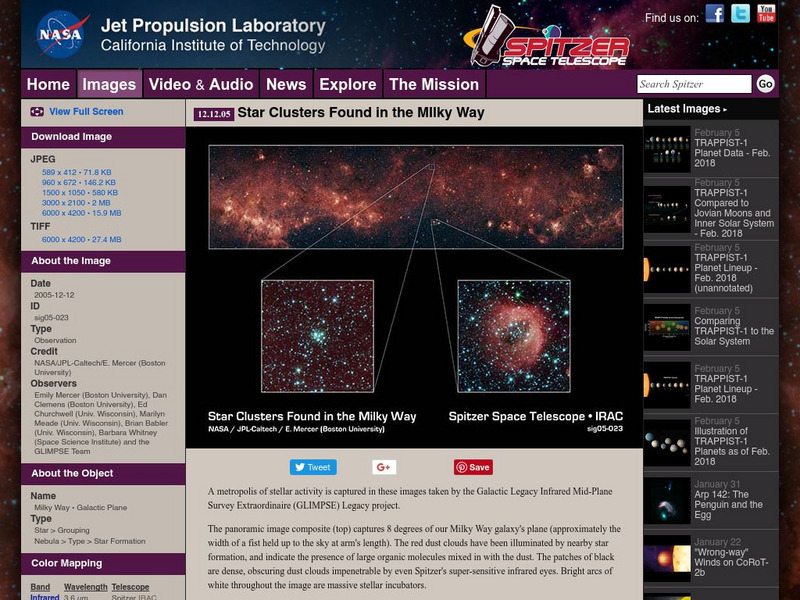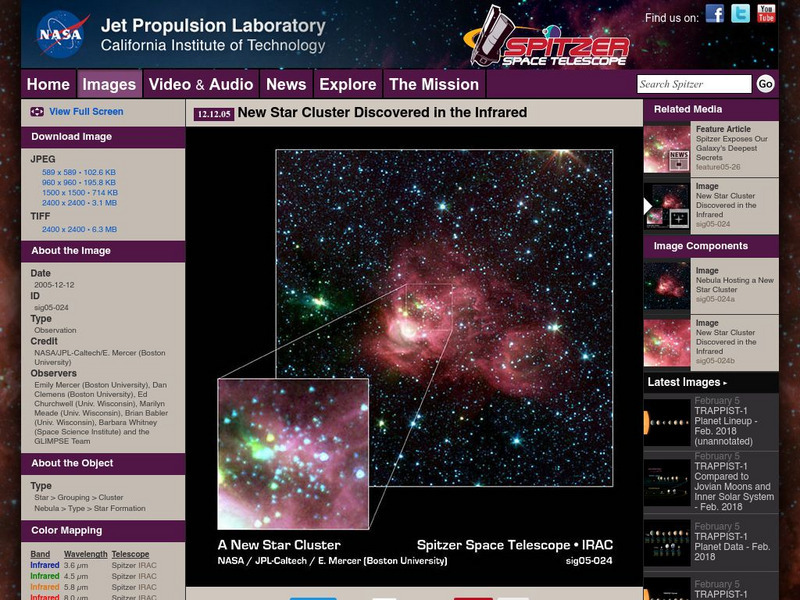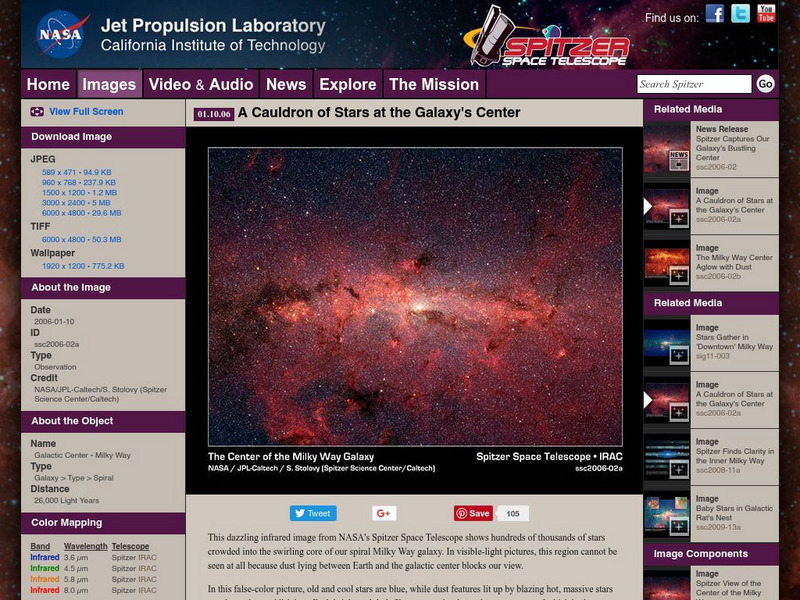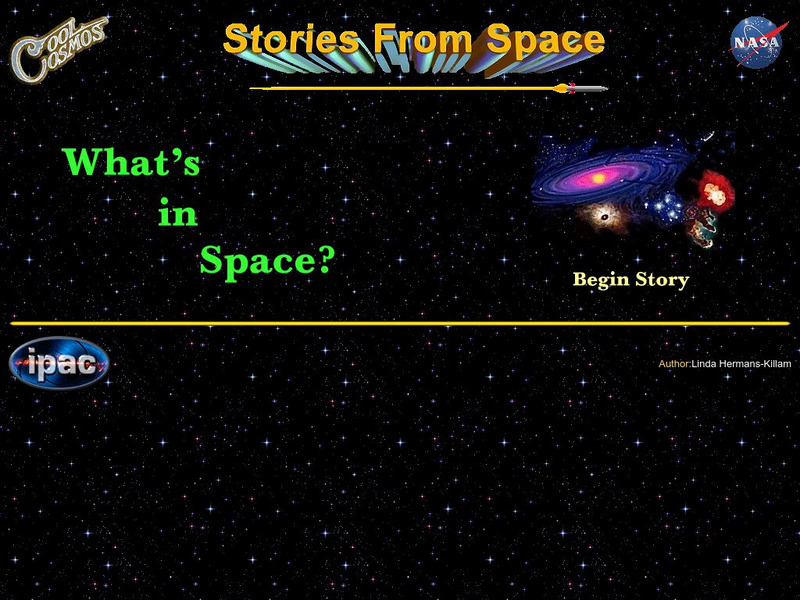Australian Broadcasting Corporation
Australian Broadcasting Corporation: News in Science: Milky Way Has an Extra Sweeping Arm
From ABC News in Science, this article discusses the shape of the Milky Way Galaxy and the presence of an additional arm attached to the galaxy.
Florida State University
Florida State University: Powers of Ten
This webpage from the Florida State University offers an applet with succeeding images, each "10 times bigger or smaller than the one preceding or following it," as a demonstration of exponential notation.
Australian Broadcasting Corporation
Australian Broadcasting Corporation: News in Science: Sucked In! Our Galaxy Eats Neighbour
From ABC News in Science, Judy Skatssoon's article discusses evidence and research surrounding the remains of the Arcturus stream of stars, remains that suggest the possibility of the Milky Way as a carnivore galaxy.
Australian Broadcasting Corporation
Australian Broadcasting Corporation: News in Science: Earth's Twin Found at Heart of Milky Way
From ABC News in Science, Marilyn Head's article centers on research behind the discovery of the planet in the Milky Way which most closely resembles the planet Earth.
Australian Broadcasting Corporation
Australian Broadcasting Corporation: News in Science: Milky Way Is Many Tentacled Beast
From ABC News in Science, Larry O'Hanlon's article discusses research connected to the size of the Milky Way Galaxy. The article suggests that the galaxy, instead of being a neat spiral, stretches out through a series of arms.
PBS
Pbs Learning Media: Spin a Spiral Galaxy
This interactive activity from NOVA Online lets you spin a spiral galaxy, including our own Milky Way. It demonstrates that what you can learn from visible light observations of a galaxy is largely determined by the angle from which you...
California Institute of Technology
Spitzer Science Center: Star Clusters in the Milky Way
Under the heading, "Star Clusters Found in the Milky Way" this site examines specific details of an image displaying various clusters of stars in the Milky Way. The text below the image highlights in detail various features of the picture.
California Institute of Technology
Spitzer Science Center: Milky Way Aglow With Dust
This space telescope image titled "The Milky Way Center Aglow with Dust" features five separate images of the galaxy's center through infrared eyes. In addition, a detailed textual overview explains various specifics of the picture.
California Institute of Technology
Spitzer Science Center: A New Star Cluster
The image entitled, "A New Star Cluster" shows the formation of a new group of stars located in the Milky Way galaxy. The text below the image goes into detail on describing the various specifics of the image.
California Institute of Technology
Spitzer Science Center: Center of the Milky Way
This space telescope image displays the center of the Milky Way Galaxy and its "A Cauldron of Stars." In addition, a detailed textual overview explains various specifics of the picture.
Society for Science and the Public
Science News for Students: Hold on to Your Stars, Ladies and Gentlemen
Describes scientific research that has revealed new information about the size and shape of the Milky Way.
California Institute of Technology
Cal Tech: Two Micron All Sky Survey
Learn about the Two Micron All Sky Survey project, in which telescopes and observatories scan the sky for infrared radiation in order to learn more about the Milky Way galaxy. The infrared spectrum is described and its importance to...
Ducksters
Ducksters: Astronomy for Kids: Galaxies
Kid's learn about the science of Galaxies. Large groups of stars such as the Milky Way throughout the universe are an interesting part of astronomy.
ClassFlow
Class Flow: The Milky Way
[Free Registration/Login Required] This flipchart provides information about the Milky Way Galaxy and Charles Messier's famous nebulae catalog.
NASA
Nasa Star Child: The Milky Way
The information, geared mainly for younger viewers, provides simple and basic information about the Milky Way, and includes several embedded links to related information.
California Institute of Technology
Cal Tech: Stories From Space: What's in Space?
Through this story you will be introduced to outer space: stars, the Milky Way, planets, the Solar System, the Sun, clouds of dust and gas, galaxies.
University of Cambridge
University of Cambridge: Cosmology: Galaxies
This site from the Cambridge Relativity provides a brief description of the structure of the Milky Way galaxy. The parts described are the disc, bulge, and halo.
CK-12 Foundation
Ck 12: Earth Science: Milky Way Study Guide
[Free Registration/Login may be required to access all resource tools.] This study guide summarizes key points about the Milky Way. Includes a few questions to check for understanding.
Mocomi & Anibrain Digital Technologies
Mocomi: What Is a Galaxy?
Explains what galaxies are and their different shapes. Includes details on the Milky Way.
Mocomi & Anibrain Digital Technologies
Mocomi: How Big Is the Universe?
Provides facts about the Universe, Jupiter, the Milky Way Galaxy, and Superclusters.
NASA
Nasa: Wilkinson Microwave Anisotropy Probe (Wmap): The Milky Way
Description of the three major components of the Milky Way galaxy as well as images and resources for further reading.

















